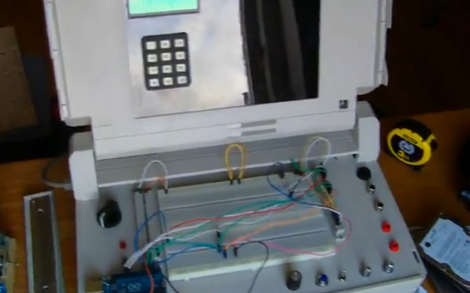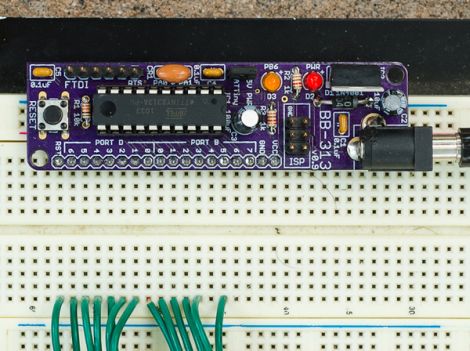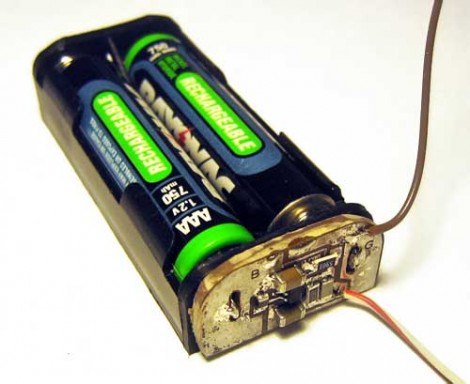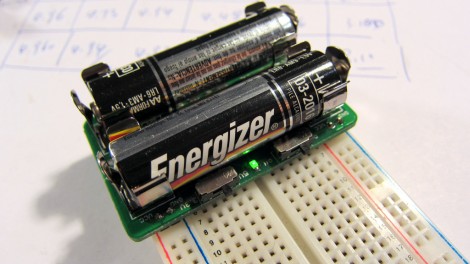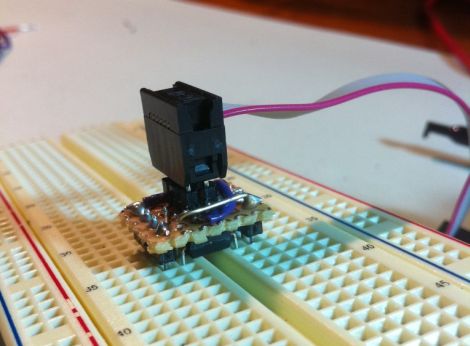[Franklyn] wrote in to tell us about the The Hack Factory Big Board project. The Twin Cities Maker group, a Minneapolis/St Paul based hackspace, set out to provide an education tool to help students make the leap from schematic diagrams to bread board connections. Naturally their conclusion was to create a humungous 10x scale bread board. The board features scaled up yet fully functional capacitors, resistors, a dip switch, and the jumbo-est LEDs we’ve seen in a long while.
Like its 0.1″ pitch counterpart, passive components can be thrown in 1″ pitch breadboard to create a myriad of analog circuits. The Twin Cities folks even tossed together an optical theremin using a scaled up photoresistor. Beyond analog circuits the board can also demonstrate various ICs using either a custom breakout board featuring an 8-pin DIP socket or a vacuum formed Atmega 328 which boasts an internal Arduino Uno. The cool thing about the giant 28-pin DIP is that it does not necessarily function as a microcontroller. Instead the UNO will be loaded with chip emulation programs geared towards the lesson at hand, jumpers select programs to teach debouncing, logic, flip-flops, and a whole slew of other basic concepts.
We are a bit concerned that the next logical step is a gigantic soldering iron, but at least we finally have something to interface to the huge liquid crystal display. If you still want more giant circuit stuff check out this 555 footstool.
Check out a quick intro video after the jump!


